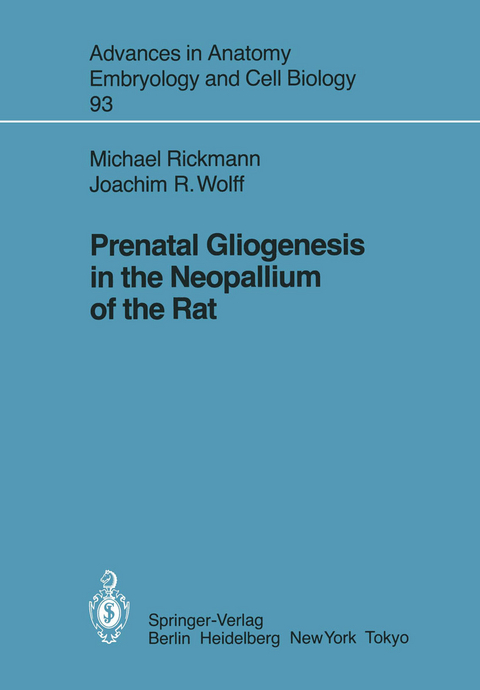
Prenatal Gliogenesis in the Neopallium of the Rat
Springer Berlin (Verlag)
978-3-540-13849-5 (ISBN)
1 Introduction.- 1.1 Identification of Glial Cells.- 1.2 Histogenesis of the Neocortex.- 2 Material and Methods.- 2.1 Animals.- 2.2 Fixation.- 2.3 Standard Preparation of Tissues.- 2.4 Selection of Cortical Region for Analysis.- 2.5 3H-Thymidine Autoradiography.- 2.6 3H-GABA Autoradiography.- 2.7 Golgi Impregnation.- 2.8 Three-Dimensional Reconstructions of Electron Micrographs.- 2.9 Immunocytochemistry.- 2.10 Structural Criteria for Glial and Neuronal Cells.- 2.11 Text Structure and Terminology.- 3 Results.- 3.1 Histological Differentiation of the Neocortex.- 3.2 First Cells of the Marginal Zone.- 3.3 Cells of Lamina I.- 3.4 Cells of the Deep Layers.- 3.5 Nonneuronal Cells of the Cortical Plate.- 4 Discussion.- 4.1 Anlage of the Palliai Zones.- 4.2 Early Glial Cells with Pial Contact.- 4.3 Early Separation of Glial and Neuronal Cell Lines.- 4.4 Subcortical Cell Proliferation.- 4.5 Intercellular Contacts.- 4.6 Maturation of Glial Cells.- 4.7 Summary of Glial Criteria.- 5 Summary.- 6 References.- 7 Subject Index.
| Erscheint lt. Verlag | 1.6.1985 |
|---|---|
| Reihe/Serie | Advances in Anatomy, Embryology and Cell Biology |
| Zusatzinfo | VIII, 104 p. 28 illus. |
| Verlagsort | Berlin |
| Sprache | englisch |
| Maße | 170 x 244 mm |
| Gewicht | 245 g |
| Themenwelt | Studium ► 1. Studienabschnitt (Vorklinik) ► Anatomie / Neuroanatomie |
| Schlagworte | Cell • cellular processes • central nervous system • Cortex • Development • Gliom • Hirngeschwulst • Laboratoriumstiere • nervous system • Ratte • Stem Cells • tissue |
| ISBN-10 | 3-540-13849-8 / 3540138498 |
| ISBN-13 | 978-3-540-13849-5 / 9783540138495 |
| Zustand | Neuware |
| Haben Sie eine Frage zum Produkt? |
aus dem Bereich


